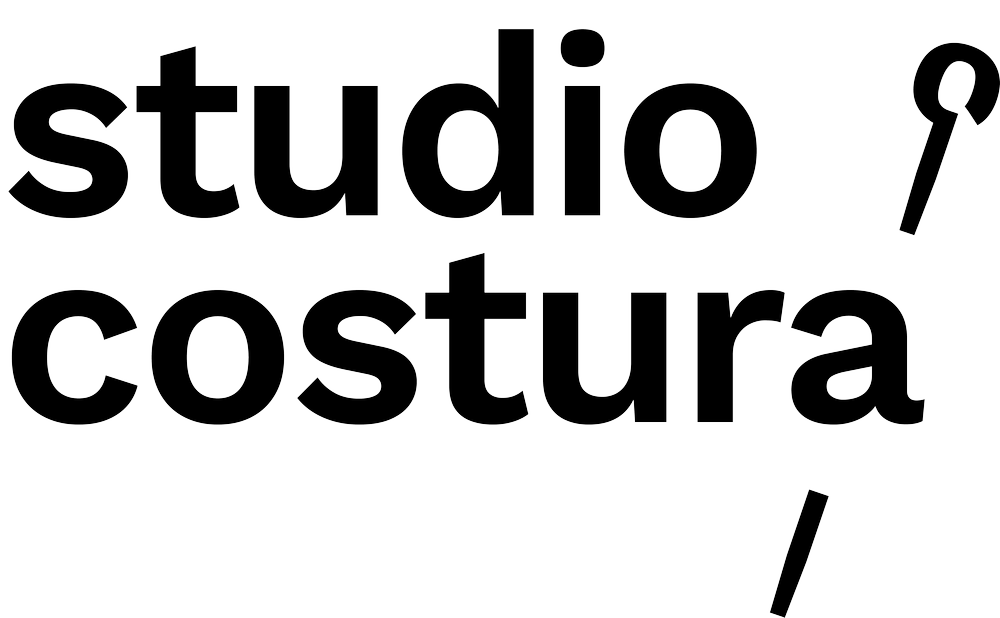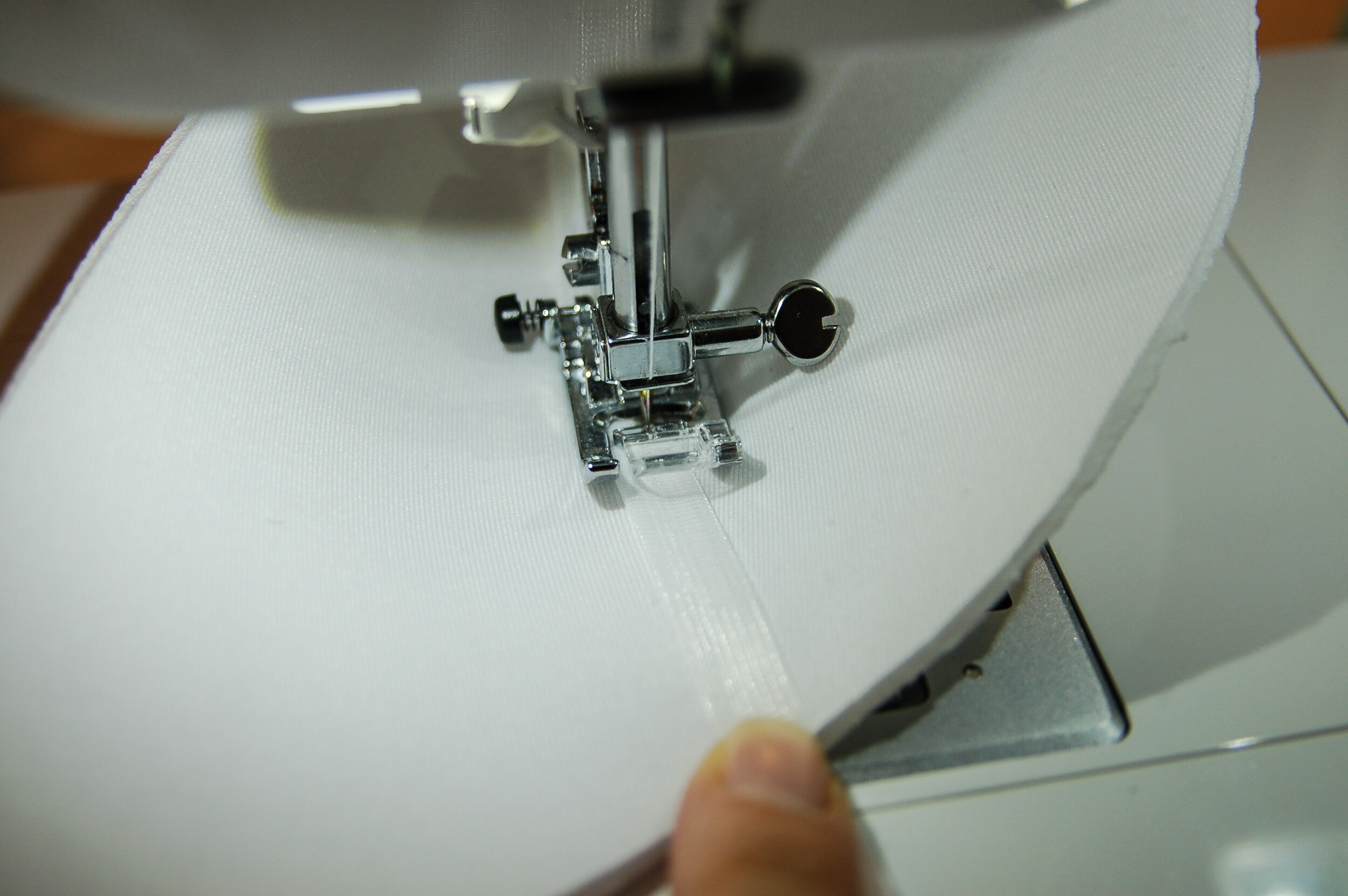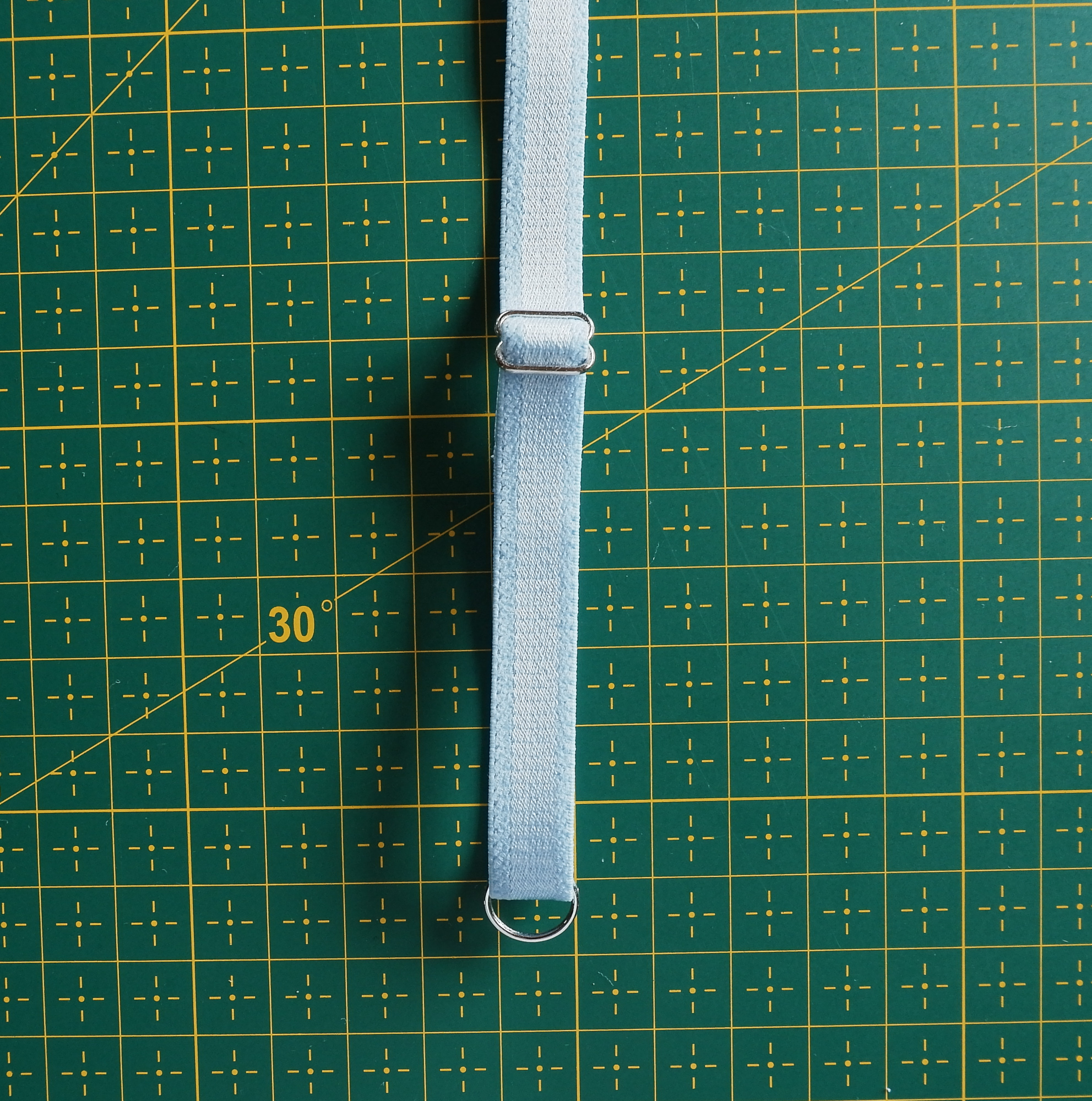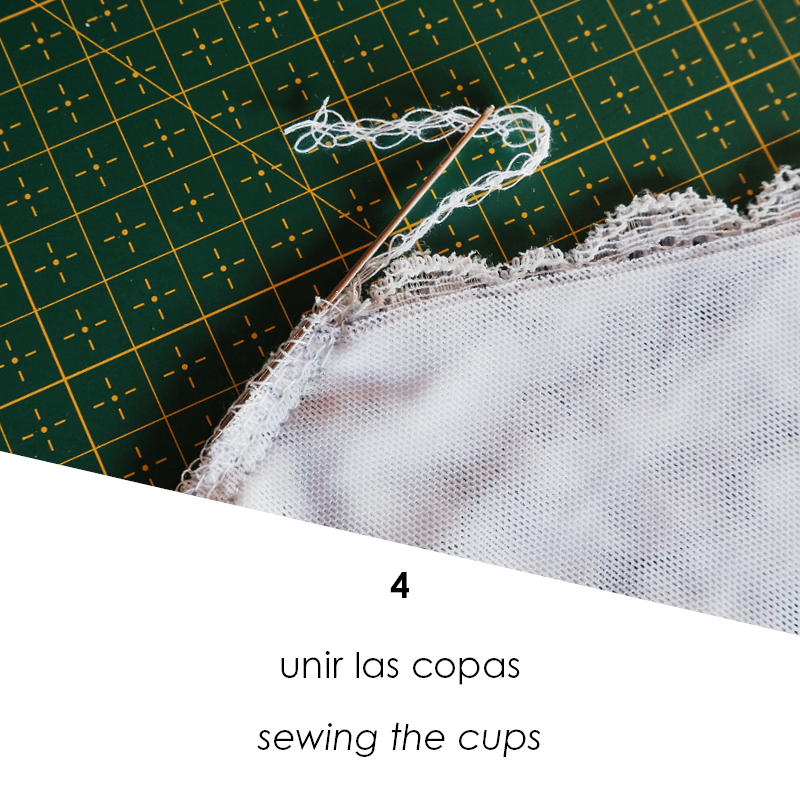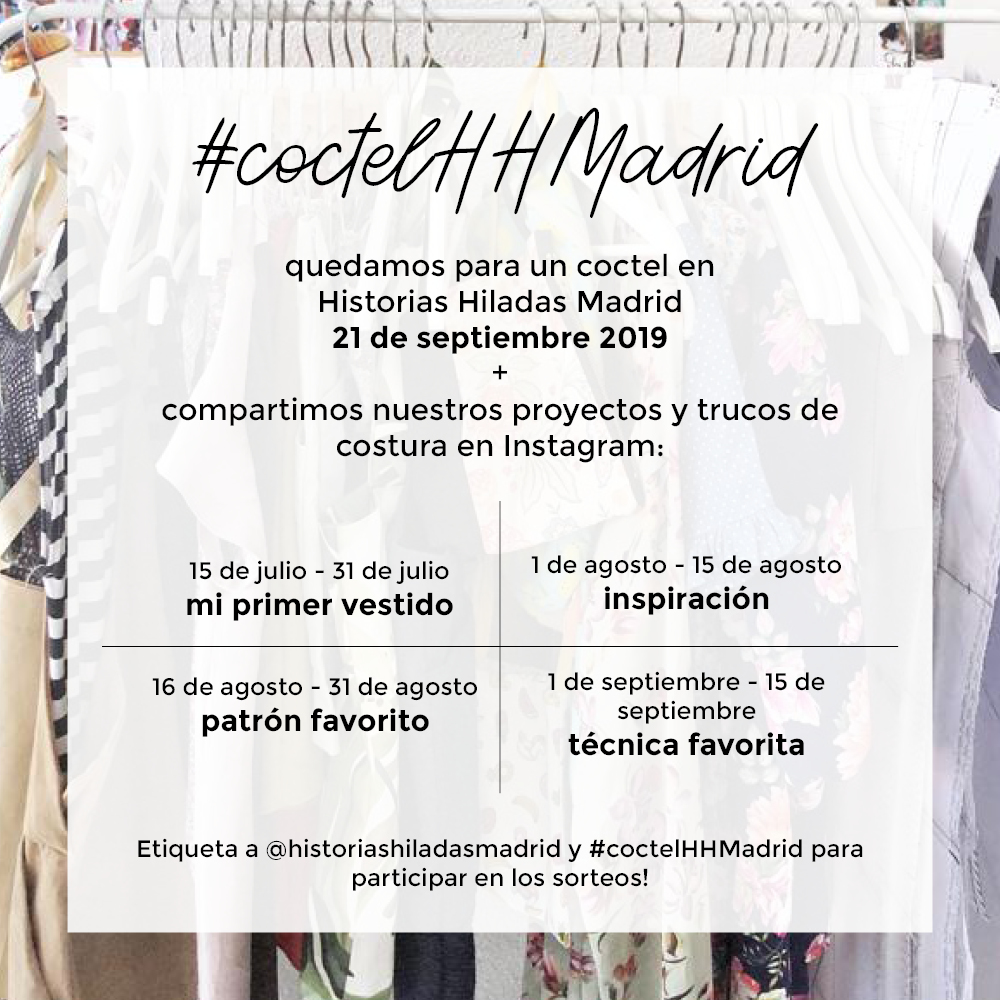Hola, aquí va un tutorial en la serie de posts de coseconmigo que prometí desde que saqué el patrón de bralette Mara: cómo hacerlo con foam. Realmente si habéis visto el tutorial de bralette Hanna sobre lo mismo, deberíais ya saber cómo hacerlo…la idea es la misma. Pero hay algunos cambios que voy a repasar aquí específicamente para este patrón.
Me puse a hacer este tutorial, ya edité las fotos y todo, pero cuando me puse ver el tutorial de Hanna sobre foam me di cuenta que estaba mucho mejor hecho y ya con casi todo explicado al detalle, jaja. Así que para hacerlo más fácil (para mí, jaja) voy a explicar la parte específica de Mara aquí y en la parte que es igual con el otro bralette os voy a indicar los pasos que van en el otro tutorial.
Sobre dónde consigo el foam, cuándo lo puedes usar y cuándo no etc lo puedes leer en el principio del otro tutorial. Igual que Hanna, este patrón está patronado para tejidos elásticos en las copas y a la hora de usar foam, esa elasticidad se reduce bastante (dependiendo del foam que uses) así que es mejor opción para personas con poca talla de copa. Pero tenéis que probar y quizás queréis subir de talla en la copa etc. En general el foam en mi opinión funciona mejor para este patrón que para Hanna ya que la forma de la copa se adapta mejor al foam y a mí en mi talla me resulta cómodo (soy 80A).
Hello, here’s the next post on Mara bralette sewalong series, something I promised to publish when I released the Mara pattern last summer: how to sew it with foam. Actually if you’ve seen the Hanna bralette foam tutorial you should have a quite clear idea about how to do it…but there are some changes which I will point out in this specific post.
I started to write this tutorial, I even edited the photos and when I started to work on the text I wanted to see how I wrote the other Hanna tutorial and I saw that it was so clear and well photographed (haha) that I decided that I’d use it as a reference for this post instead of writing it all over again…it will be way easier (for me at least, haha!).
You can read about where to buy foam, when you can use it in bralette projects and when you can’t etc in the beginning of the Hanna post. This pattern, like Hanna is drafted for stretch fabrics so using foam can reduce the amount of stretch quite a lot (depending on the specific foam you use), the fit will definitely be different compared to the original version. As always I recommend using foam for stretch patterns when you don’t have large bust but I won’t say you can’t use it for bigger bust too…just try out and see if you like it, you can always go up a cup size to compensate the lack of stretch, this might be one way to deal with it. In general in my opinion this pattern is better suited for foam than Hanna, the breast shape is rounder and it looks and feels nice with foam in my size (80A).
Para poder usar foam en las copas tenemos que modificar las piezas A y B que forman la copa. El foam se cose de otra forma, sin margenes de costura, y por eso las piezas de encaje/de tela las tienes que cortar como siempre pero estas dos piezas para foam hay que modificarlas.
Para empezar quita en las partes curvadas (que se unen luego por el centro para formar la copa) 6 mm de margen de costura, mantén los piquetes.
Haz lo mismo con la costura central que está entre las dos piezas interiores de la copa (la parte derecha de la pieza A).
En la pieza B en el lado izquierdo tienes que quitar 10 mm ya que es el margen de elástico de la sisa (una vez se cose el elástico, primero solo se cose con el margen de encaje para después doblarlo encima del foam y para que no tengas que doblar el foam encima de sí mismo)
En la pieza A tenemos que reducir también la línea de escote, donde va la puntilla. Por una parte hay que reducir 10 mm en la parte superior donde las dos piezas, A y B, se casan ya que en el B ya hemos quitado los 10 mm. Yo prefiero también quitar unos 3 mm en la costura central para estar segura de que el foam no sea visible una vez que está unido con el encaje. Por eso he quitado en la parte de arriba 10 mm y abajo 3 mm y he unido los dos puntos.
Corta las piezas A y B de foam (no te olvides de volver a marcar los piquetes en las curvas para poder casar las piezas correctamente) dos veces y usando tus patrones originales corta A y B de encaje también dos veces. El resto de las piezas, C y D, se cortan igual que antes, tanto de encaje como de forro.
Pattern pieces A and B that form the cup need to be altered in order to use foam. Foam is sewn without seam allowances and that’s why you need to cut the lace/fabric pieces as always but the foam will be cut differently.
First take off the seam allowance of the curved parts in the middle (the seams that will be sewn together to form the cup), 6 mm on each. Mark the notches again
Do the same with the central seam on the right side of piece A, take off 6 mm
On the left side of the piece B you need to take off 10 mm as this is the underarm elastic seam allowance on this pattern (once the elastic is sewn on the lace part only, you’ll fold it under to then cover the foam, this way you don’t have to fold the foam and create bulk)
On puece A you also need to trim off the neckline a bit. First from the upper part you need to take off 10 mm as this is what you’ve taken off on the piece B and those two pieces have to align now. I also prefer taking off 3 mm on the center of the neckline, just in case so the foam won’t be seen once it’s sewn together with lace. That’s why I’ve marked 10 mm on the left side and 3 mm on the right side and then I joined the two points with a straight line
Cut pieces A and B twice from foam (don’t forget to mark the new notches so you can sew the foam pieces together) and cut pieces A and B twice form lace using the original pattern pieces. The rest of the pieces, C and D, will be cut as usual from lace and lining.
Como en el paso 1 del otro tutorial une las copas de foam.
As in step 1 of the other tutorial, sew the foam cups together.
Como en el paso 2 del otro tutorial tapa las costuras con cinta de forro de lencería o de tul (opcional).
As in step 2 of the other tutorial cover the seams with lining strips (optional).
Remata la parte superior de las copas como en los pasos 3-4 del otro tutorial (opcional, también podrías solo remallar el borde si lo prefieres).
Cover the upper part of the cups with lining strips as in steps 3-4 of the other tutorial (optional, you can also just serge the edges).
Como en el otro tutorial en pasos 5-6, une las dos copas y haz el remate. Junta las piezas de encaje A y B con los derecho juntos y cose/remalla, haz un pespunte en el lado derecho en al costura de la unión. Junta las dos capas, haz el pespunte de refuerzo.
As in the other tutorial on steps 5-6 sew the cups together and cover the central seam with lining strips. Sew the lace pieces A and B together with right sides together, topstich on the right side of the cup seams. Then sew the cup pieces right sides together and sew the topstitching on the right side.
Ya puedes poner el encaje encima del foam (los revéses juntos) y verás que la puntilla sobresale en la parte del escote y en la sisa sobran los 10 mm de margen de elástico que quitamos al foam previamente.
Juntando bien las costuras centrales y de las copas, cose con la puntada larga para unir las dos capas en la parte de abajo, así será más fácil unirlo todo con la banda central en el siguiente paso.
Ahora puedes también unir el encaje al foam en la parte del escote cosiendo con zig-zag o con la puntada recta a través de las dos capas. Yo usé esta vez la puntada recta y cosí a la altura de foam a través de las dos capas, fijando bien dónde quedaba el centro.
Now you can put the lace layer on top of the foam layer (with wrong sides together) and you’ll see that the scalloped edge of the lace overlaps the neckline and that you have 10 mm of extra seam allowance on lace pieces on the underarm seams.
Align both layers well using the cup and central seam as reference points, machine baste the two layers together on the lower part (following the curve of the cups), this way it’s easier to sew this part together with front band on the next step.
Now you can also join both layers on the cup part, sew a zig-zag or straigh stitch through the two layers. I used straight stitch this time and I sewed them together on top of the upper border of the foam cups, making sure the centers match.
Como en el paso 11 de las instrucciones del patrón, une tus copas con la banda central siguiendo los piquetes y empezando a coser en el mismo borde de encaje y ya después cosiendo encima del foam. Sigue con los pasos igual que en las instrucciones (aplicar el recubrearos encima de la costura que acabas de hacer, coser el elástico de bajo etc) hasta llegar al paso 30 cuando tienes que coser el elástico de sisa.
As in step 11 of the pattern instructions, sew the cups and the front band together following the notches, start sewing on the border to catch both lace layers, then continue sewing with foam. Keep following the instructions (sewing underwire channeling and band elastic) until sewing the underarm elastic on step 30.
Lo único diferente a la hora de coser el elástico de sisa es que en la primera pasada vas a coserlo solo en la capa de encaje en la parte de la copa (el resto sigue igual como siempre). Después cuando haces la segunda pasada, doblas el encaje en la parte de la copa justo encima del foam y así todo queda bien sin bulto en las costuras. Después sigue como siempre hasta terminar el bralette.
The only difference when sewing the underarm elastic is that you sew you first pass of zig-zag only on top of the lace layer and not the foam (the rest of the underarm is sewn as usual). When you sew the second zig-zag pass you’ll fold the elastic under on top of the foam and this way there won’t be any extra bulk. After that continue as always until you finish your bralette.
Así es como queda el bralette con foam por dentro.
This is how the foam cup looks once ecerything is finished.
Aprovechando que tenía que hacer este tutorial, hice el bralette en mi talla y en conjunto también cosí un par de braguitas con el nuevo patrón Vera. Para las braguitas usé un punto de viscosa con brillo que tenía hace tiempo en mi colección y añadí trozos del mismo encaje en color marfil. Aunque los colores “nuetros” (las que no se transparentan debajo de camisetas/blusas blancas) no se ven como algo espectacular en las fotos de lencería, estoy super contenta con mi conjunto porque es super practico y cómodo. De hecho es justo lo que quería, tanto en bralette (con foam) y en braguitas (cómodo corte bikini, elásticos suaves, un poco de encaje para que sean monos)…y no os miento cuando digo que es el primer conjunto que me he hecho para mí (y no para muestra de patrón/regalo para otra persona) en mucho tiempo…quizás en un año?! Así que nada, espero que os guste este post y podéis ver todos los posts del coseconmigo de Mara bralette en este apartado del blog! Los siguientes tutoriales serán para el bajo de encaje más largo y para telas de punto…nos vemos por aquí!
Knowing I needed to photograph this tutorial, I made a bralette in my size and completed it with a matching pantie using the new Vera panties pattern to create a pretty lingerie set. I used this special shiny viscose knit for the panties (had it in my stash for forever) and I also added some leftover lace pieces. Altough the “neutral” colors (the ones that won’t be see through under white tops/t-shirts) don’t look like something extra fancy on photos, I’m very happy with this set as it’s so parctical and pretty. Actually it’s just what I wanted, a bralette with foam cups and panties with this comfortable bikini cut style, using a nice stretchy knit and pretty lace details…I’m not lying when I say that I haven’t made myself a set of lingerie for at least for a year or so (it has been all sample sewing or gifts). I hope you’ve liked this post and you can see all the posts on this Mara sewalong series over at this page. The next tutorials will be about using knits and a wider lace hem!
